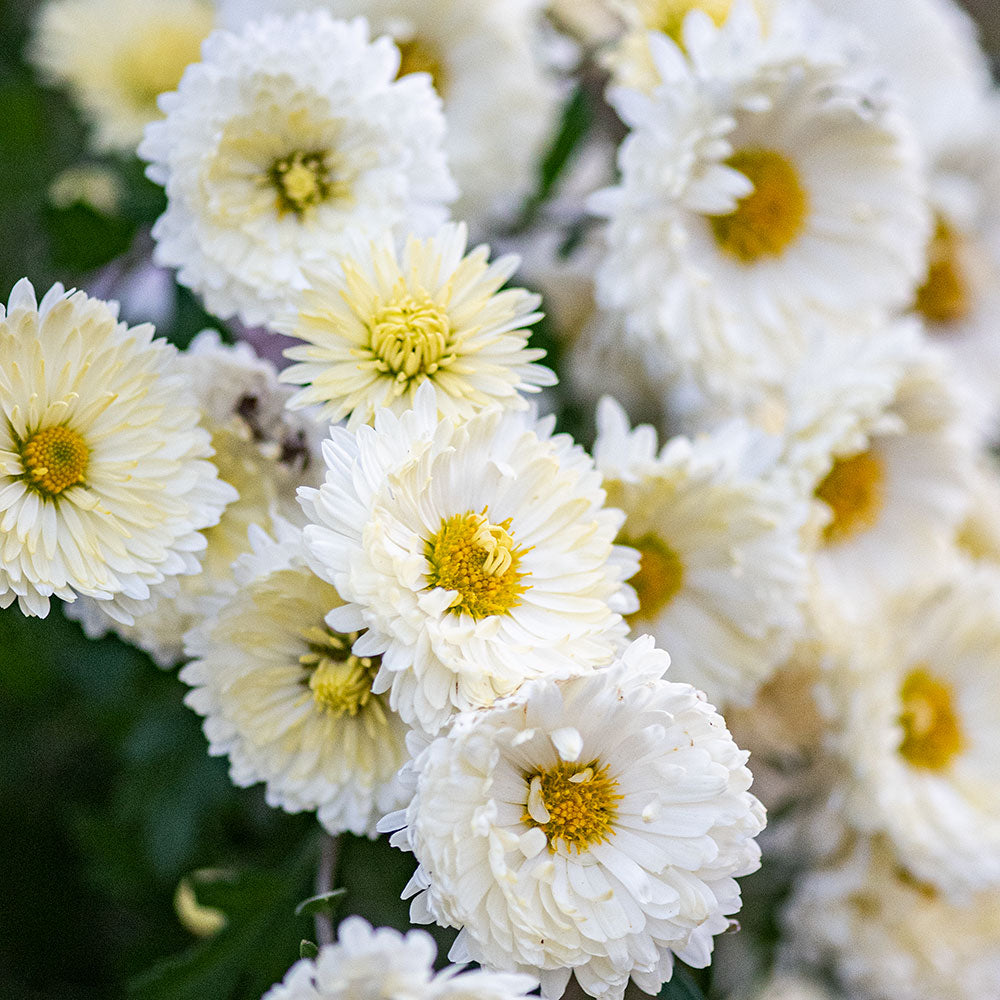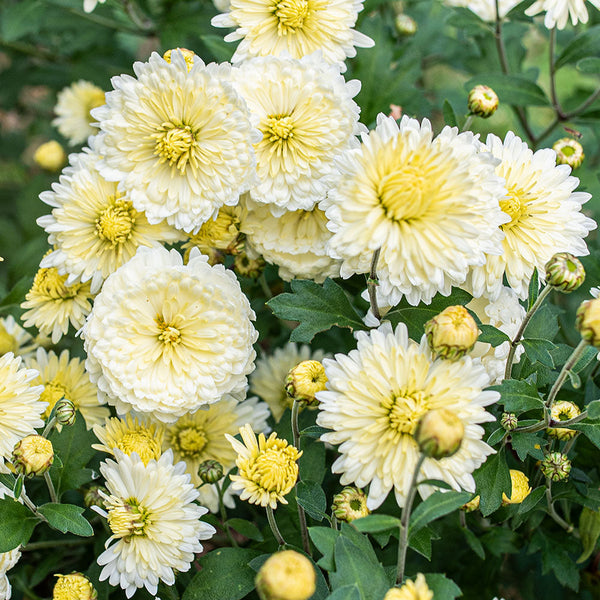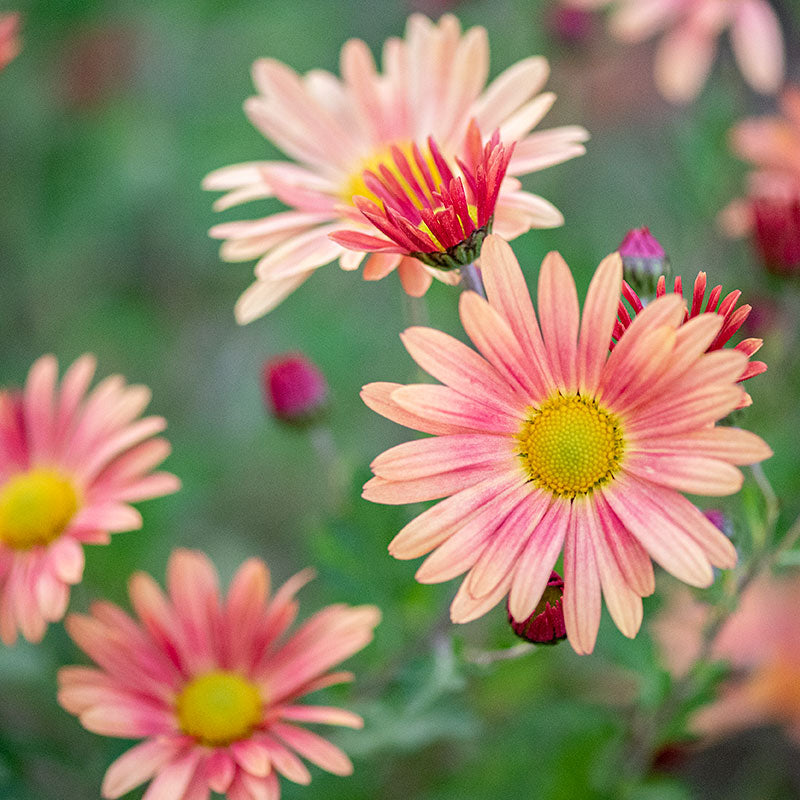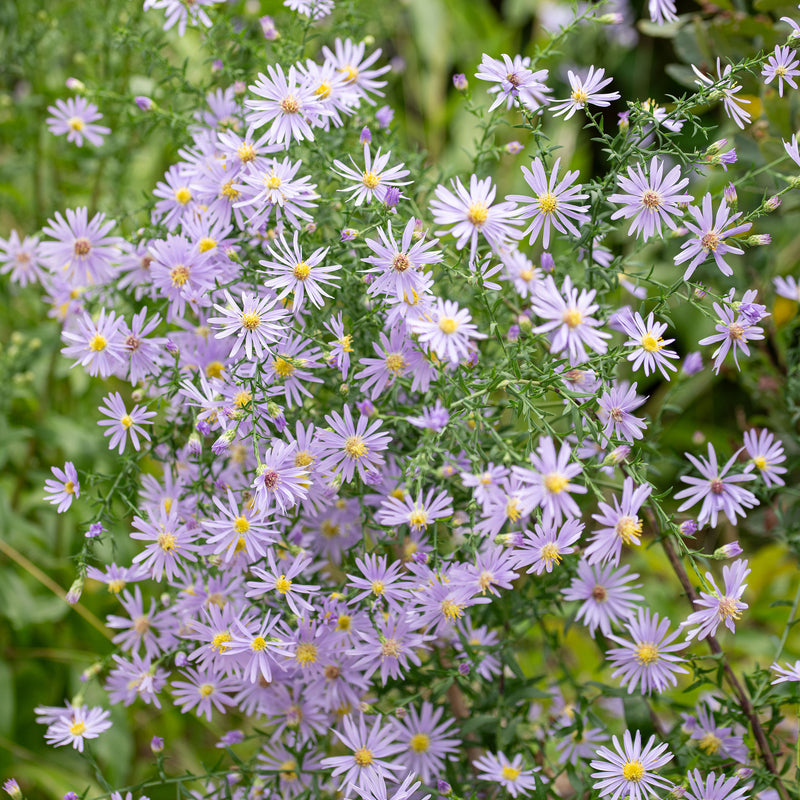WHEN TO SET OUTSIDE
This mid to late fall bloomer can be set in the ground in spring after all danger of frost has passed.
PLACEMENT & CULTIVATION
Chrysanthemums provide a lush green backdrop to summer bloomers and welcome color and spicy-scented foliage in early to late autumn. Pollinator-friendly, they provide nectar and pollen to foraging bees and butterflies late in the year when other sources are scarce. Mums are deer resistant, too, and make exquisite cut flowers. Pinch them back by about 1" when they are 6" tall to encourage bushiness, and pinch again when the new bushy growth is 6" tall. If desired, they can be cut back by one-third in mid-June for more compact and floriferous, slightly later-blooming plants. Cut back in late fall and add a mulch of pine needles or evergreen boughs after the ground freezes for added winter protection. Divide in spring every three years. Caution: it can cause dermatitis and contains lower toxicity elements, especially in flowers and leaves.
Watering Details:
These plants do best when provided with ample moisture. Do not allow soil to dry out by watering as needed, about one inch per week initially, and increasing the amount as the plants increase in size. When flowering time arrives, do not hesitate to provide them with water three times a week.
Soil pH:
Mums prefer slightly acidic soils, but can tolerate neutral conditions.
Fertilizer:
When planting in spring, apply a slow-release granular fertilizer and 2" of compost mixed into the soil surface. Reapply yearly in spring.
Diseases & Pests:
Chrysanthemums can occasionally be susceptible to mildew, rust, and wilt; it helps to water the soil, not the foliage. If disease does occur, treat by spraying with an organic fungicide every week or so, depending on local weather conditions, until the issue is resolved. Aphids may appear, but are often destroyed by natural predators. If predators are not controlling aphids, a blast of water to the plants, especially the undersides of leaves, will remove them. Alternatively, an insecticidal soap can be applied to kill the aphids, especially if the water treatment is not enough. However, keep in mind that this will also kill the beneficial insects that prey upon the aphids.
When to Cut for Bouquets:
Harvest when the center of older flower is fully open.









































